Limits of Magical Thinking
Steve Jobs, the mad perfectionist, even perfected his stare.
He wanted it to be hypnotic. He wanted the other person to blink first. He wanted it to be, like Dracula’s saturnine gaze, a force that could bend your will to his and subsume your reality in his.
There’s an arresting picture of Jobs staring out, challenging us to blink, on the cover of Walter Isaacson’s new biography, “Steve Jobs.” The writer begins the book by comparing the moody lord of Silicon Valley to Shakespeare’s Henry V — a “callous but sentimental, inspiring but flawed king.”
Certainly, Jobs created what Shakespeare called “the brightest heaven of invention.” But his life sounded like the darkest hell of volatility.
An Apple C.E.O. who jousted with Jobs wondered if he had a mild bipolarity.
“Sometimes he would be ecstatic, at other times he was depressed,” Isaacson writes. There were Rasputin-like seductions followed by raging tirades. Everyone was either a hero or bozo.
As Jobs’s famous ad campaign for Apple said, “Here’s to the crazy ones. ... They push the human race forward.”
The monstre sacré fancied himself an “enlightened being,” but he was capable of frightening coldness, even with his oldest collaborators and family. Yet he often sobbed uncontrollably.
Isaacson told me that Jobs yearned to be a saint; but one of the colleagues he ousted from Apple mordantly noted that the petulant and aesthetic Jobs would have made an excellent King of France.
His extremes left everyone around him with vertigo.
He embraced Zen minimalism and anti-materialism. First, he lived in an unfurnished mansion, then a house so modest that Bill Gates, on a visit, was astonished that the whole Jobs family could fit in it. And Jobs scorned security, often leaving his back door unlocked.
Yet his genius was designing alluring products that would create a country of technology addicts. He demanded laser-like focus from employees to create an A.D.D. world.
He was abandoned by parents who conceived him out of wedlock at 23, and he then abandoned a daughter for many years that he conceived out of wedlock at 23.
Chrisann Brennan, the mother of Jobs’s oldest child, Lisa, told Isaacson that being put up for adoption left Jobs “full of broken glass.” He very belatedly acknowledged Lisa and their relationship was built, Isaacson says, on “layers of resentment.”
He could be hard on women. Two exes scrawled mean messages on his walls. As soon as he learned that his beautiful, willowy, blonde girlfriend, Laurene Powell, was pregnant in 1991, he began musing that he might still be in love with the previous beautiful, willowy, blonde girlfriend, Tina Redse.
“He surprised a wide swath of friends and even acquaintances by asking them what he should do,” Isaacson writes. “ ‘Who was prettier,’ he would ask, ‘Tina or Laurene?’ ” And “who should he marry?”
Isaacson notes that Jobs could be distant at times with the two daughters he had with Laurene (though not the son). When one daughter dreamed of going to the Oscars with him, he blew her off.
Andy Hertzfeld, a friend and former Apple engineer, lent Lisa $20,000 when she thought her father was not going to pay her Harvard tuition. Jobs paid it back to his friend, but Lisa did not invite him to her Harvard graduation.
“The key question about Steve is why he can’t control himself at times from being so reflexively cruel and harmful to some people,” Hertzfeld said. “That goes back to being abandoned at birth.”
He almost always wore black turtlenecks and jeans. (Early on, he scorned deodorant and went barefoot and had a disturbing habit of soaking his feet in the office toilet.)
Yet he sometimes tried to ply his exquisite taste to remake the women in his life.
When he was dating the much older Joan Baez — enthralled by her relationship with his idol, Bob Dylan — he drove her to a Ralph Lauren store in the Stanford mall to show her a red dress that would be “perfect” for her. But one of the world’s richest men merely showed her the dress, even after she told him she “couldn’t really afford it,” while he bought shirts.
When he met his sister, Mona Simpson, a struggling novelist, as an adult, he berated her for not wearing clothes that were “fetching enough” and then sent her a box of Issey Miyake pantsuits “in flattering colors,” she said.
He was a control freak, yet when he learned he had a rare form of pancreatic cancer that would respond to surgery, he ignored his wife, doctors and friends and put the surgery off for nine months, trying to heal himself with wacky fruit diets, hydrotherapy, a psychic and expressing his negative feelings. (As though he had to be encouraged.)
Addicted to fasting because he felt it produced euphoria and ecstasy, he refused to eat when he needed protein to fight his cancer.
The Da Vinci of Apple could be self-aware. “I know that living with me,” he told Isaacson as he was dying, “was not a bowl of cherries.”








